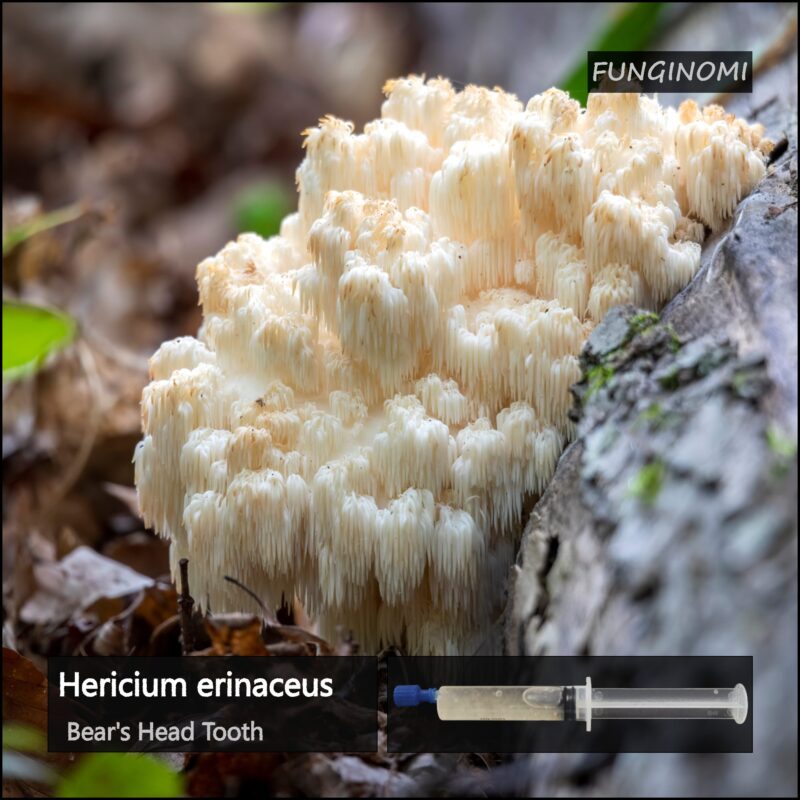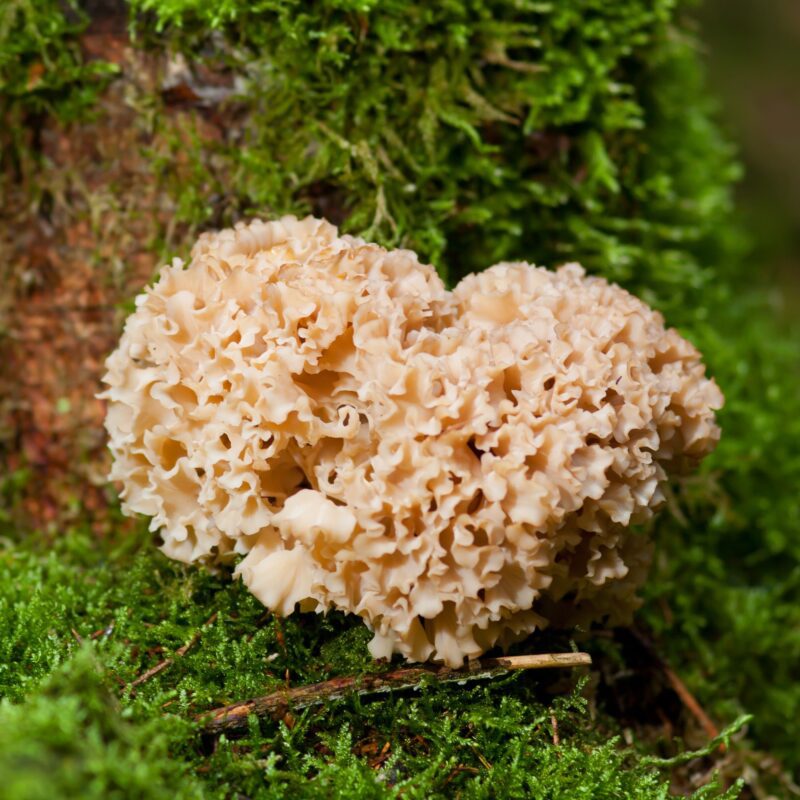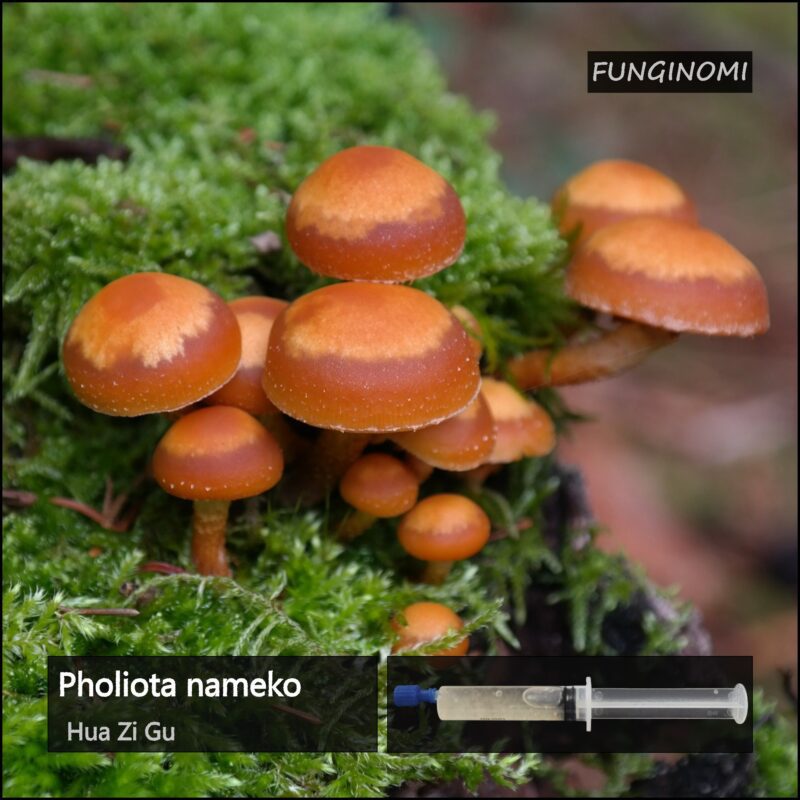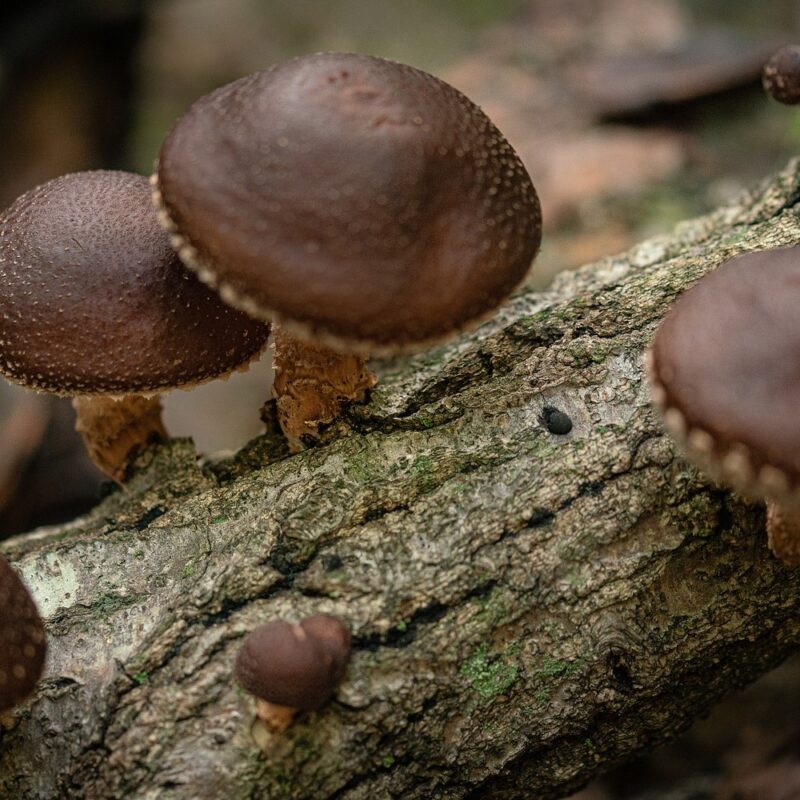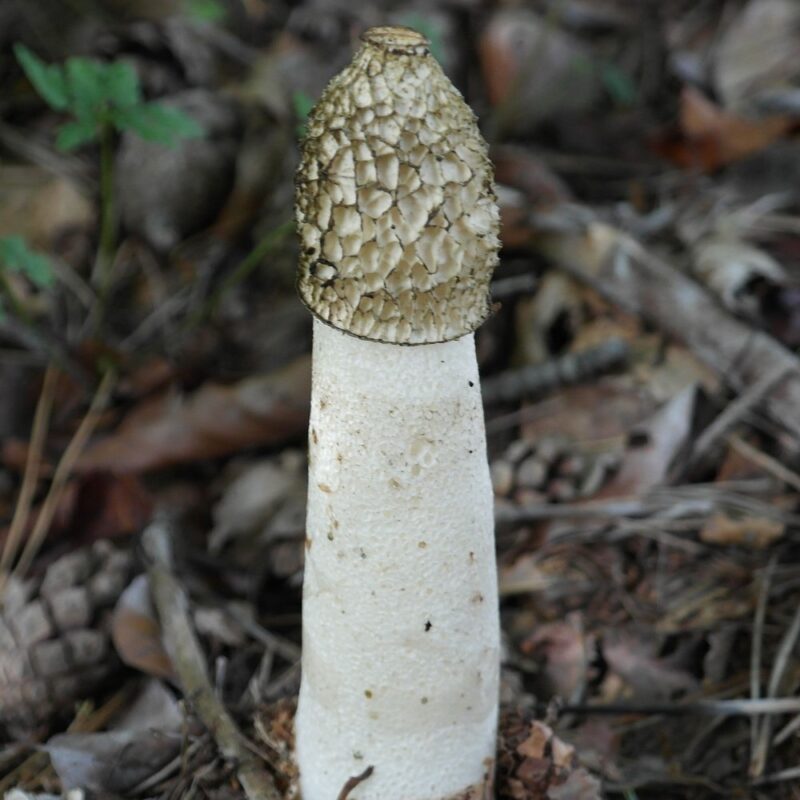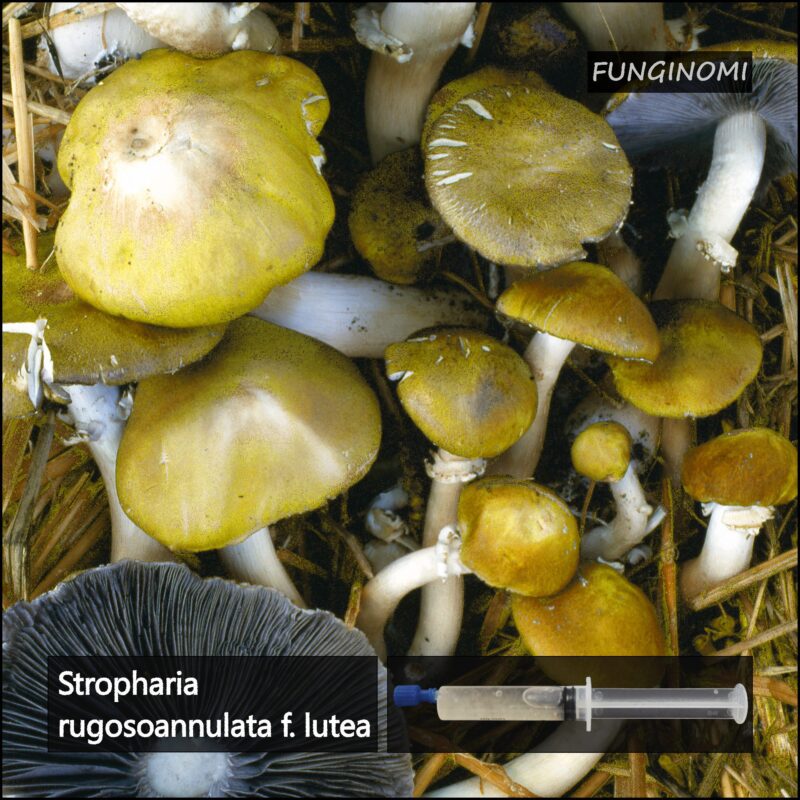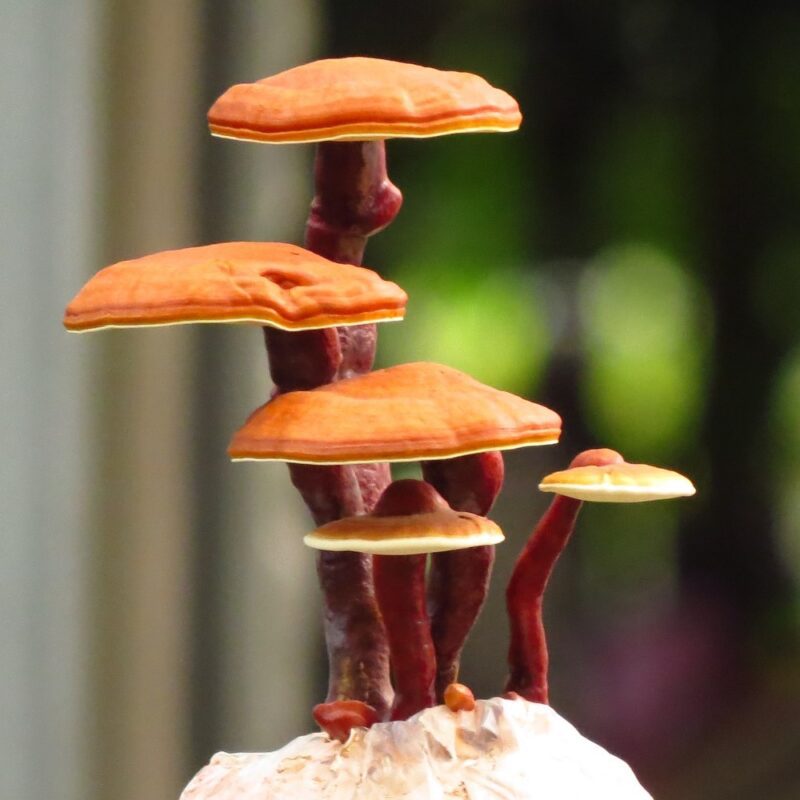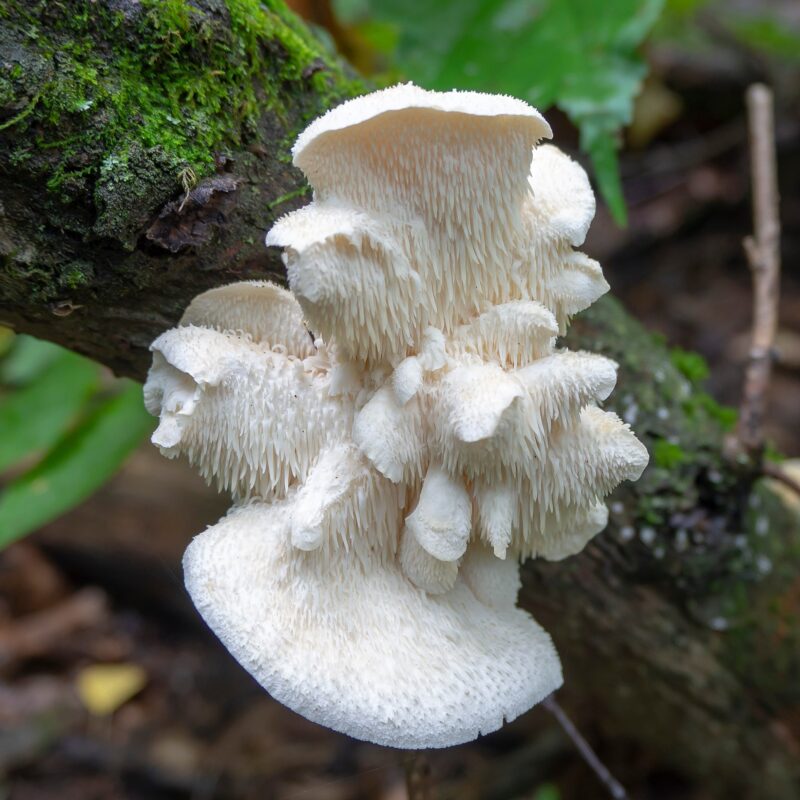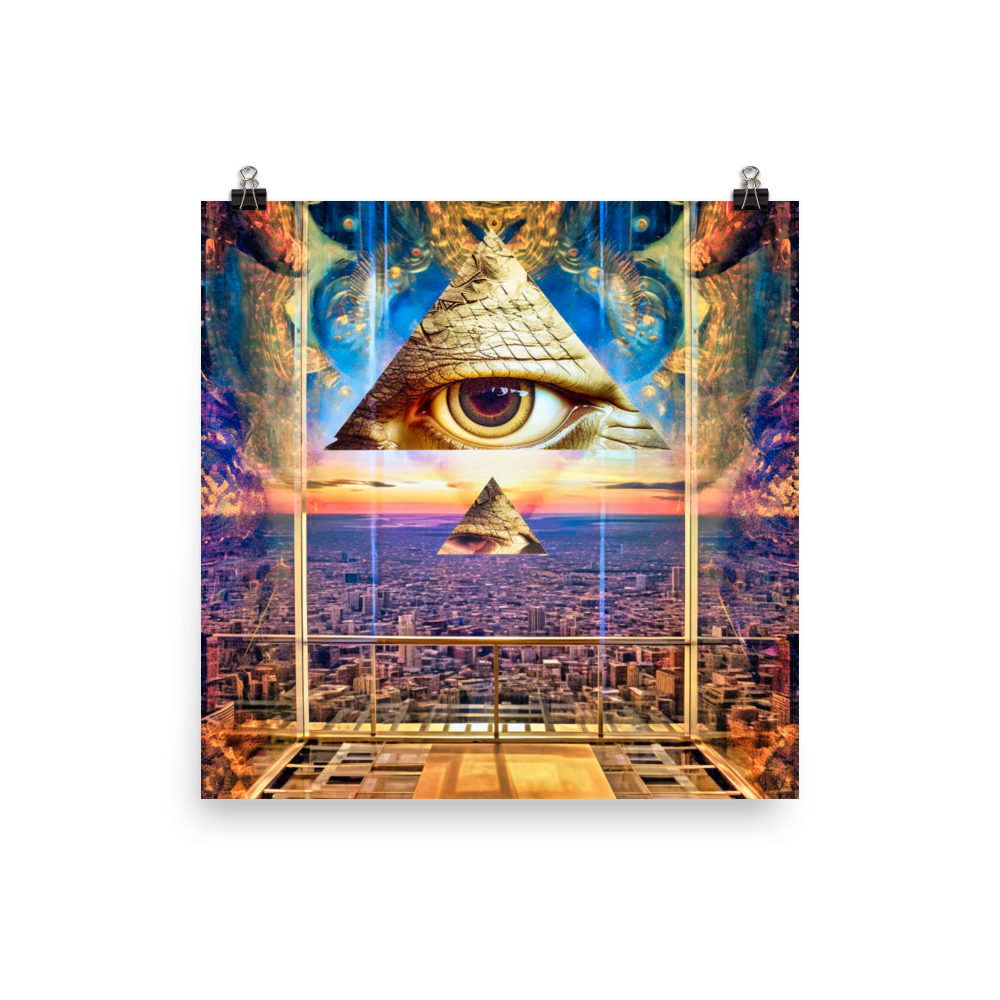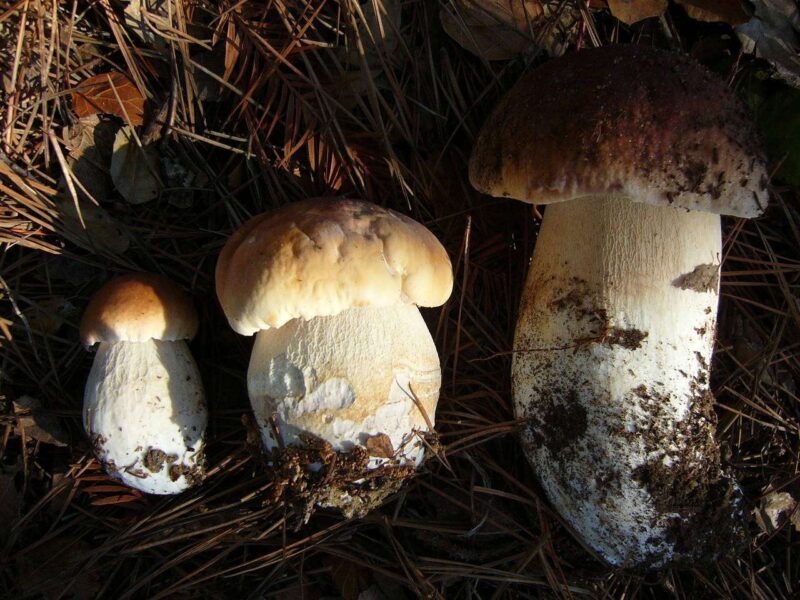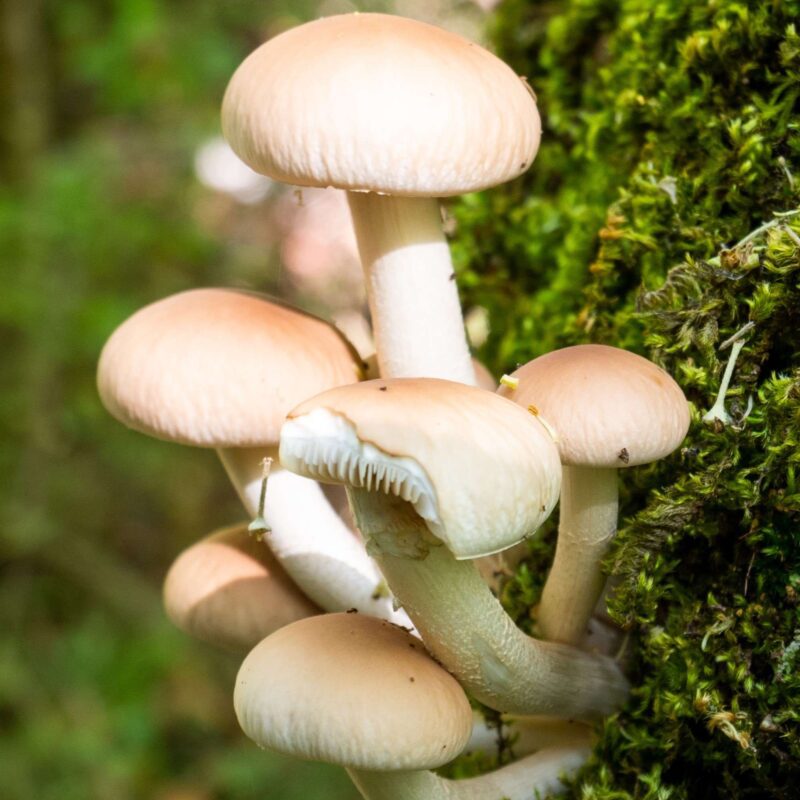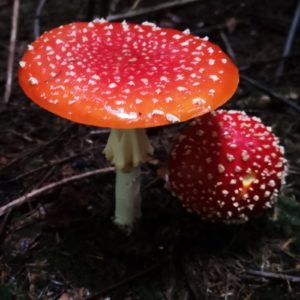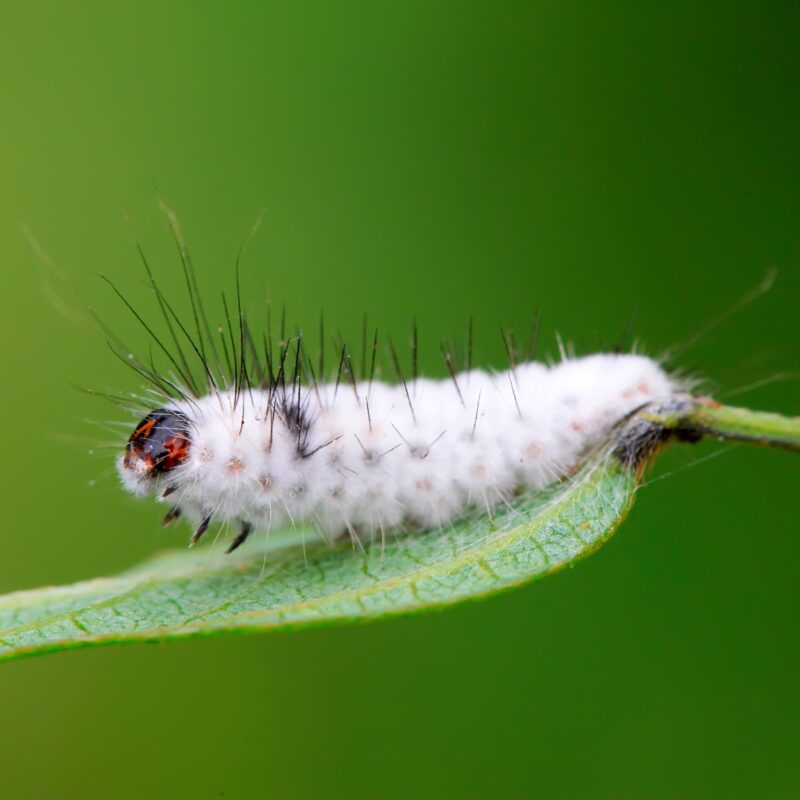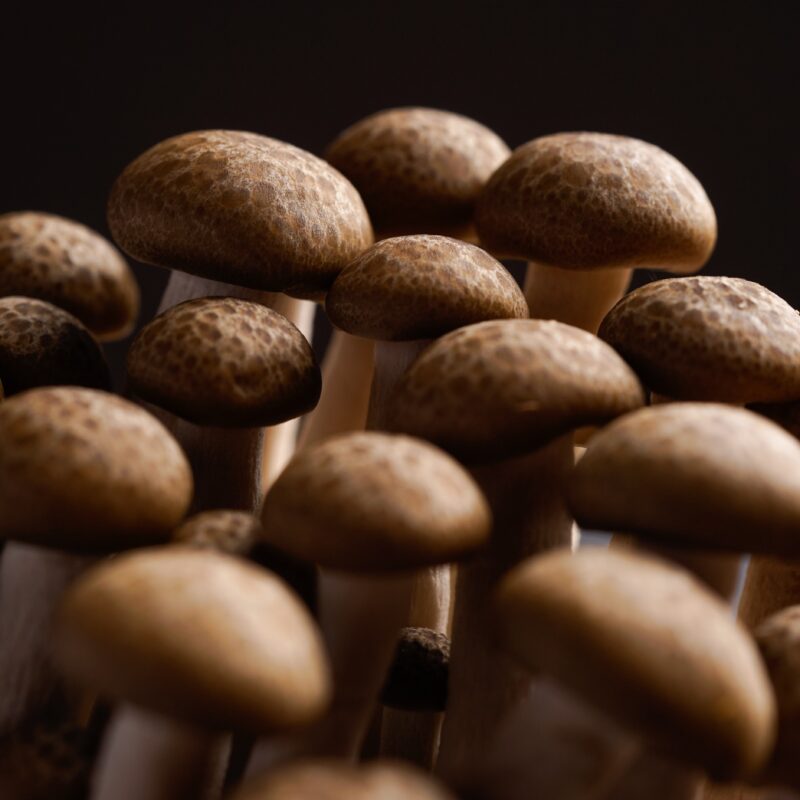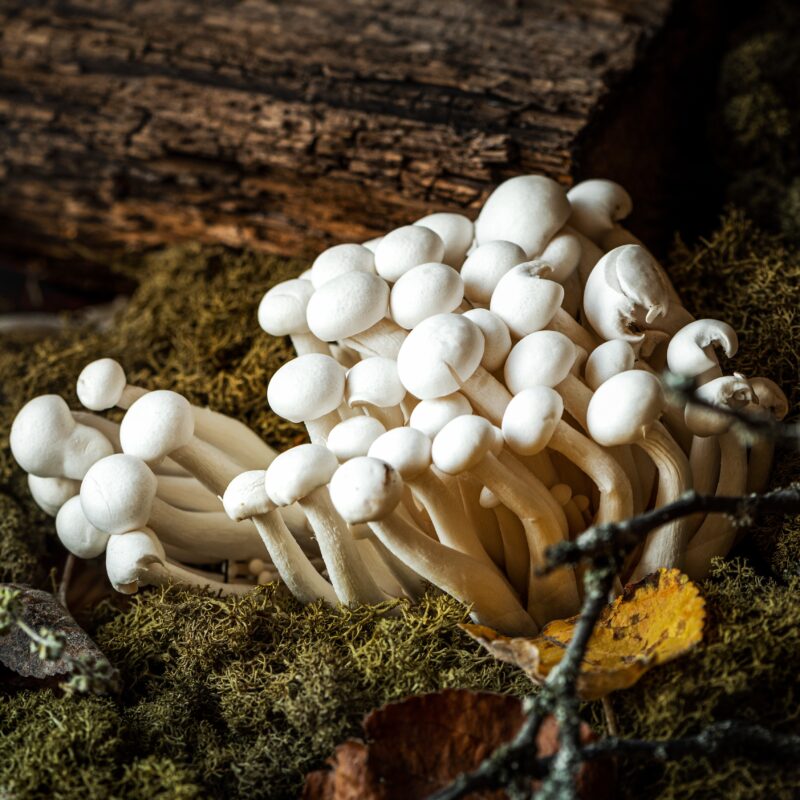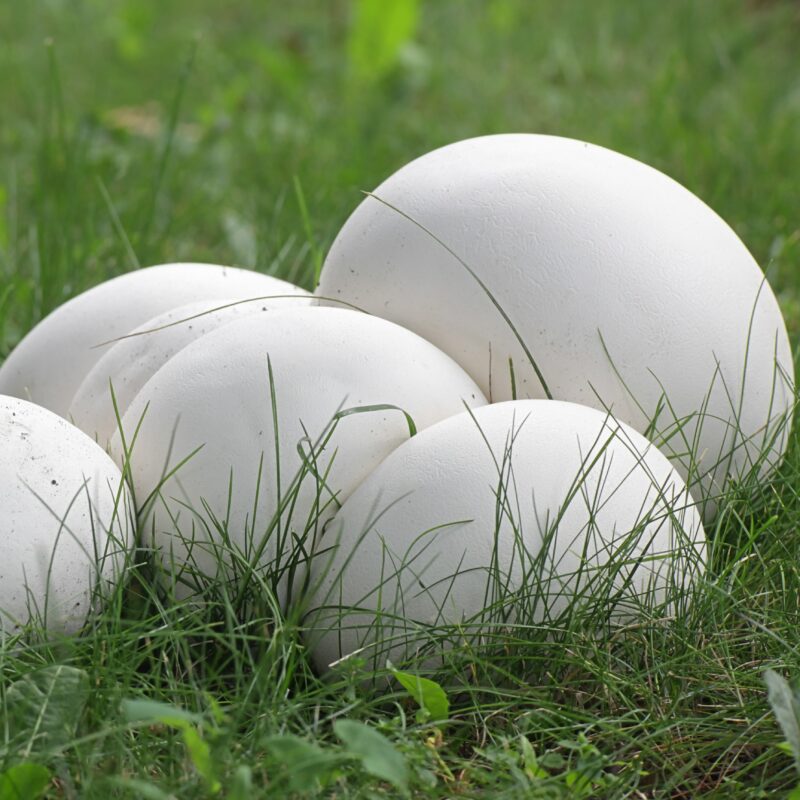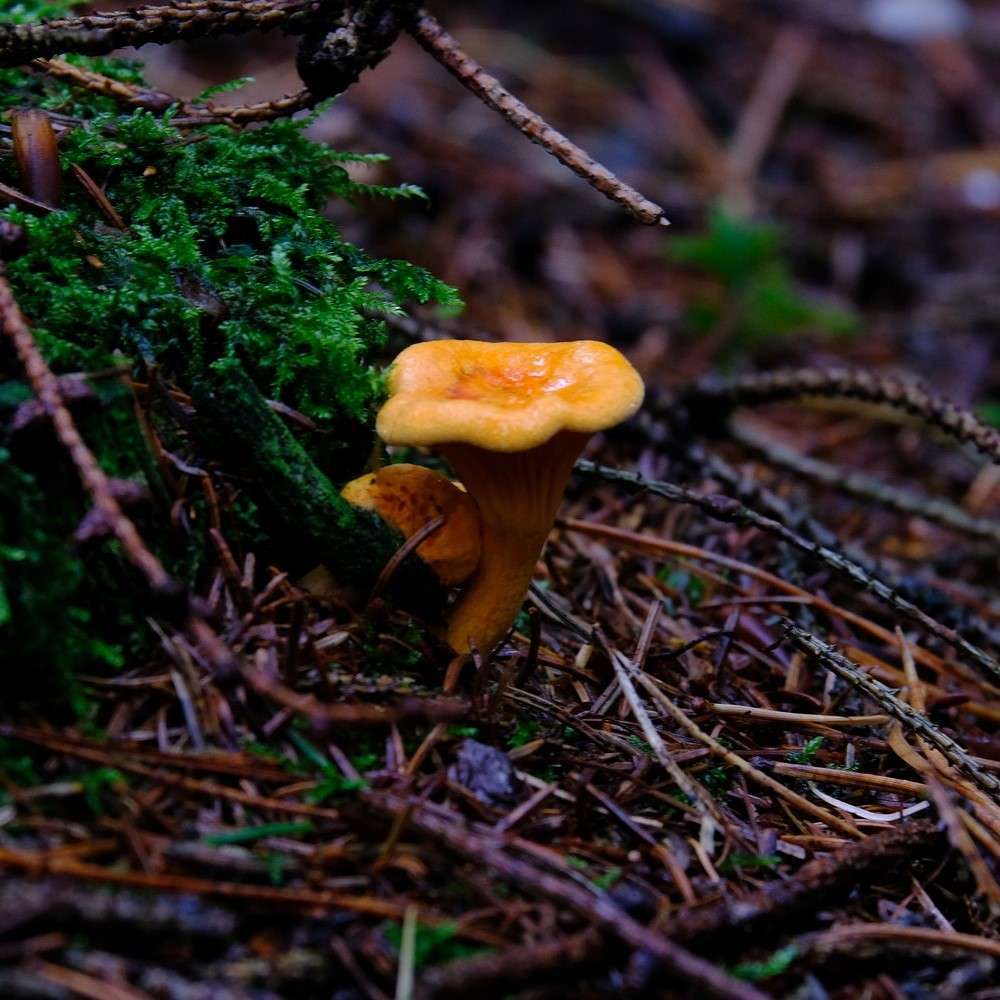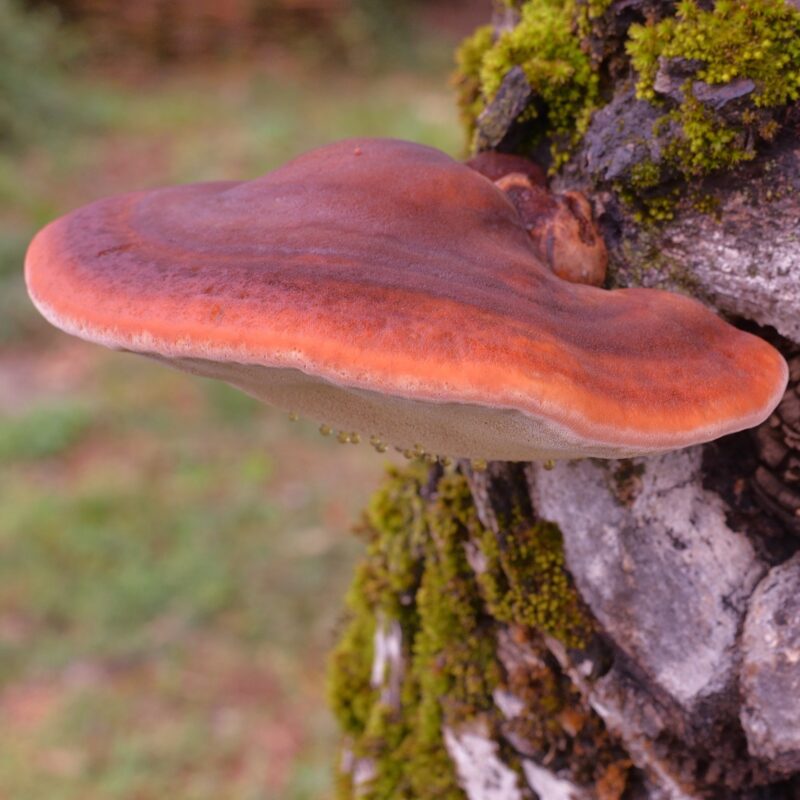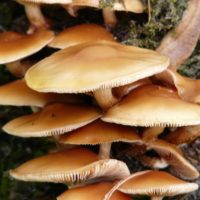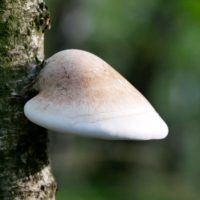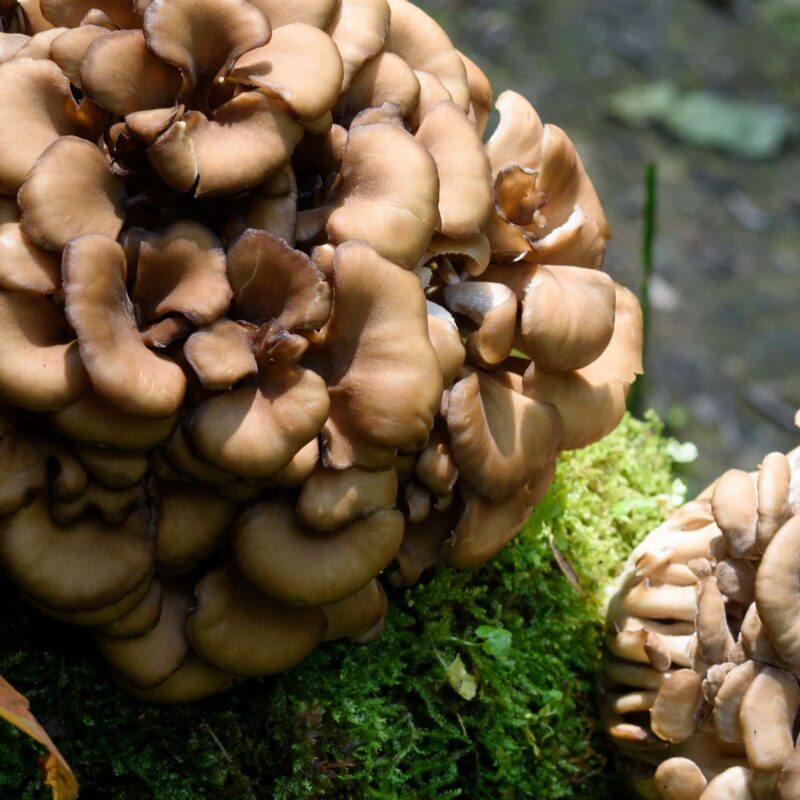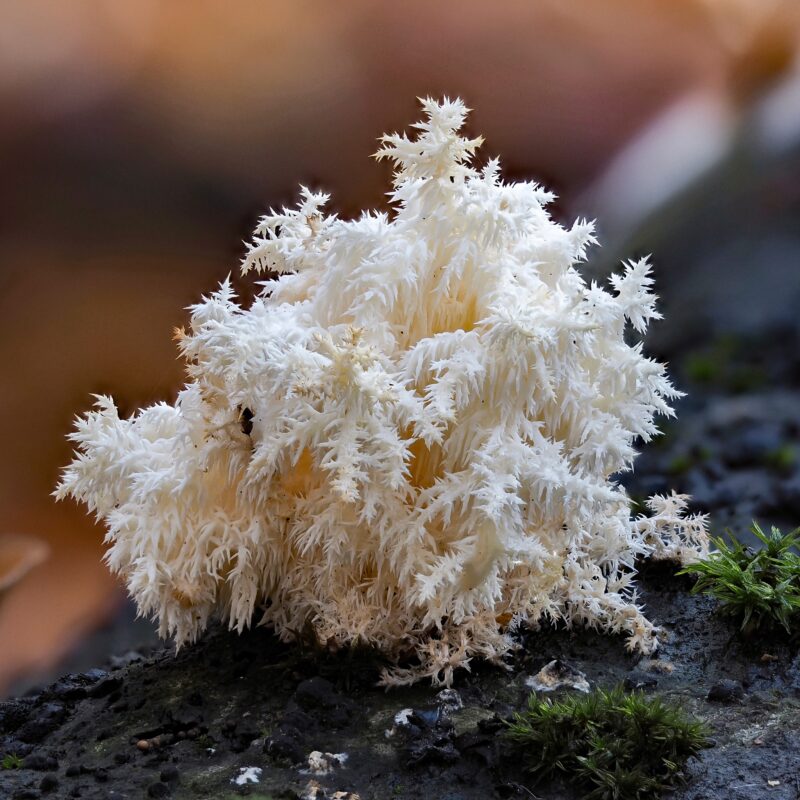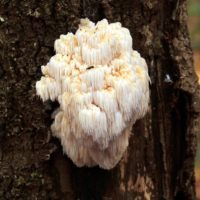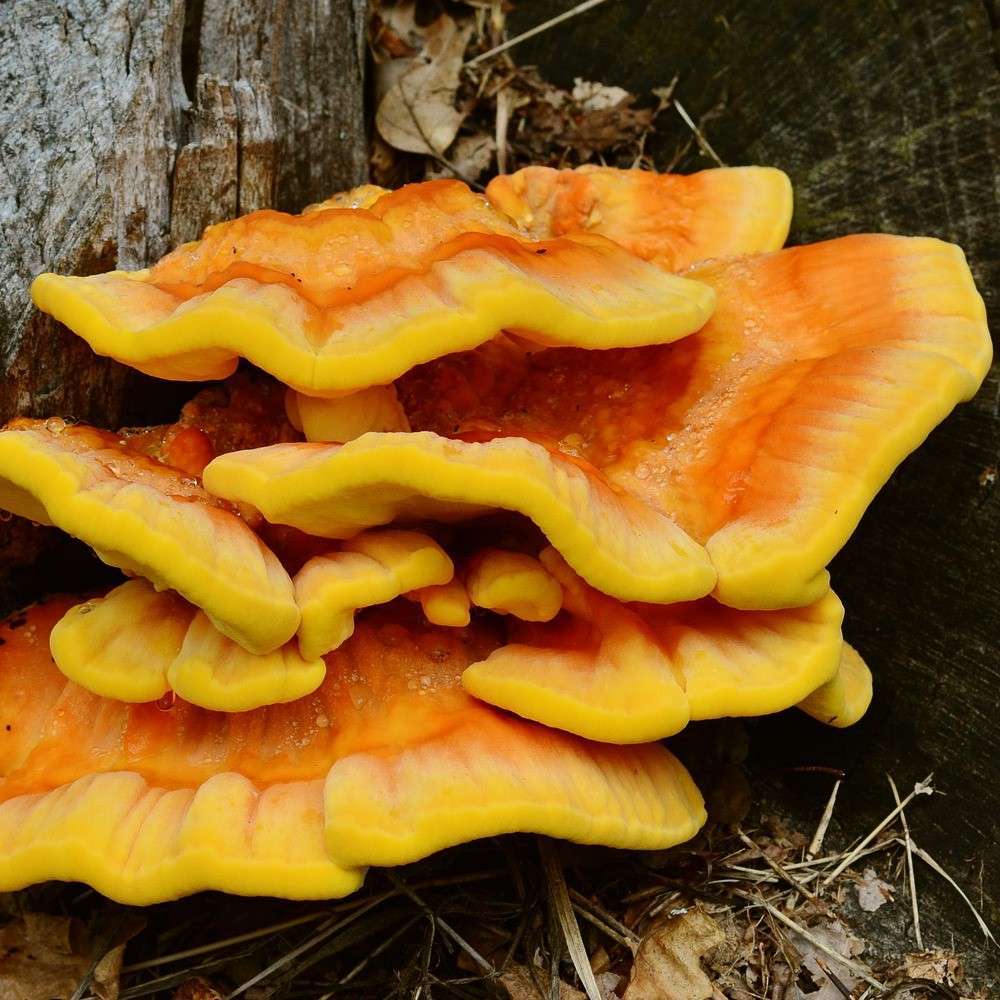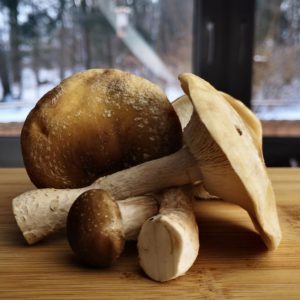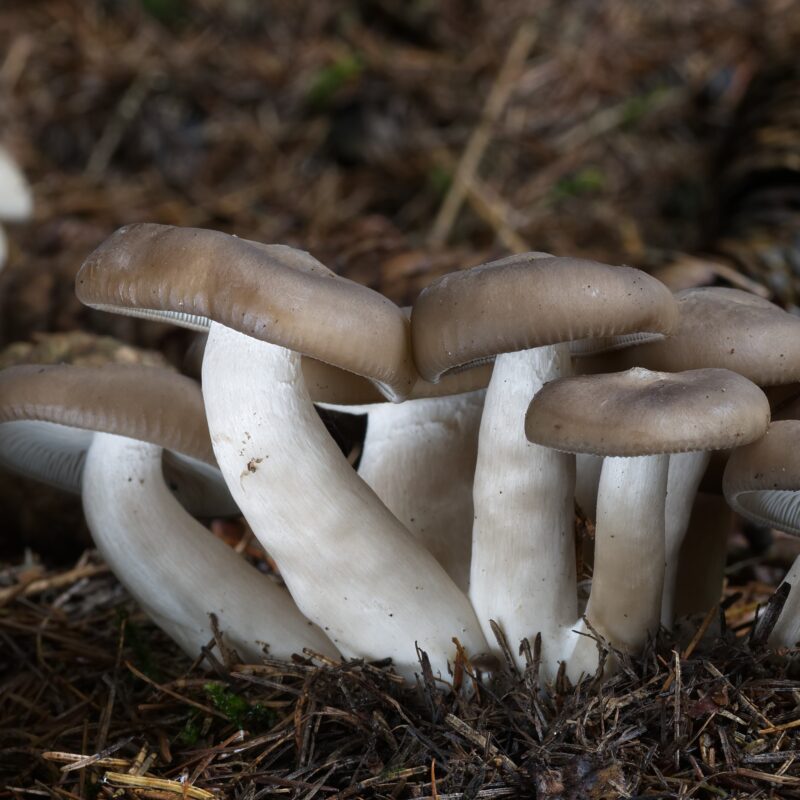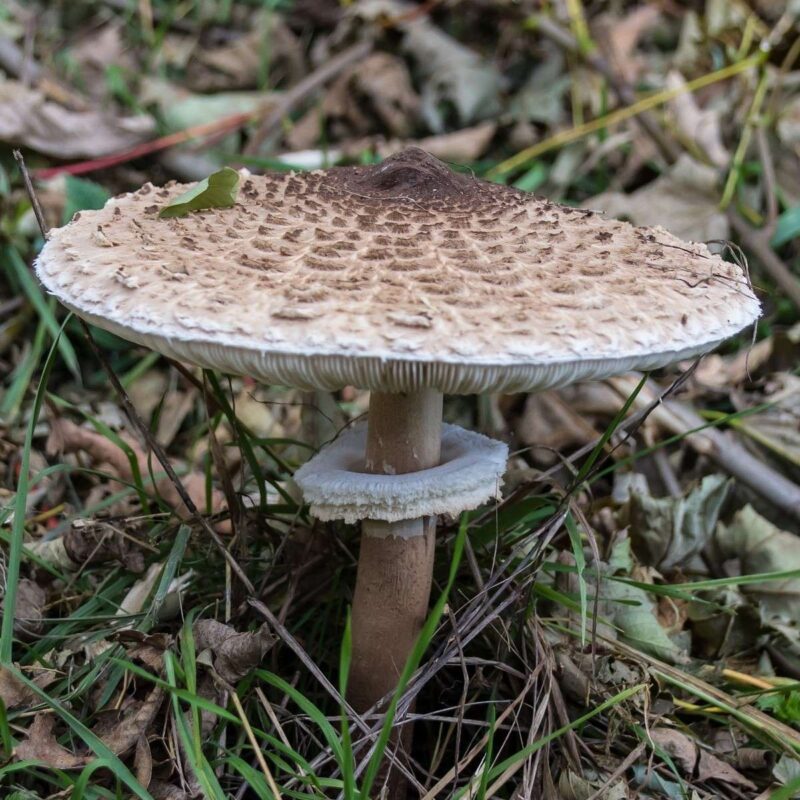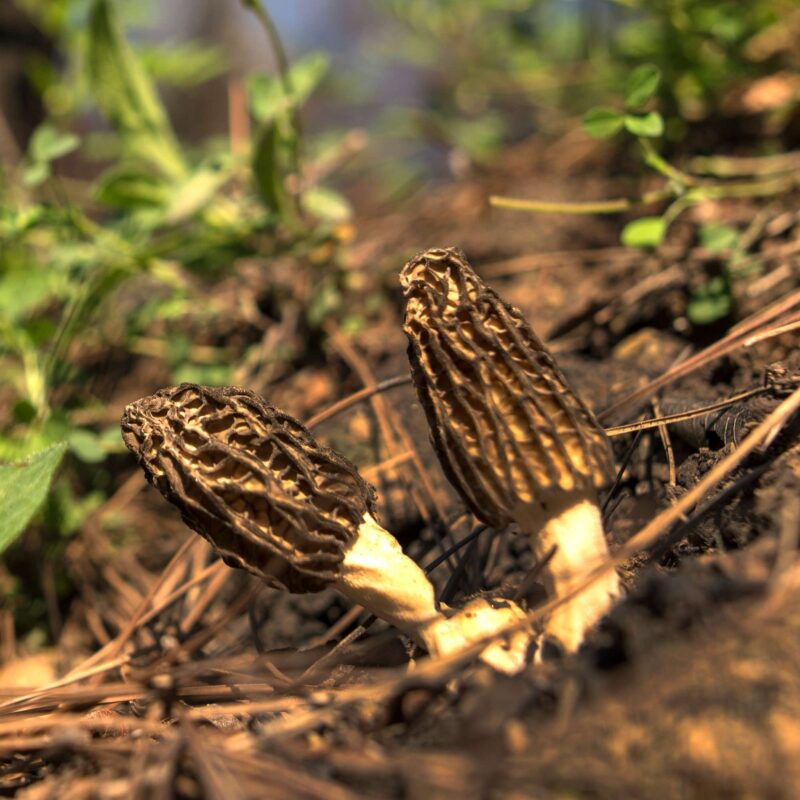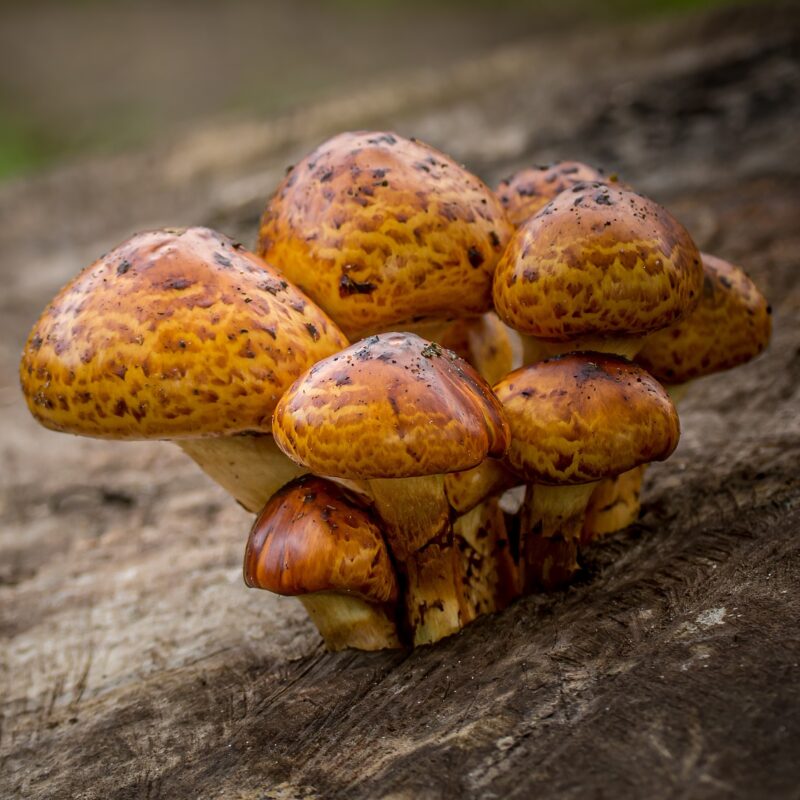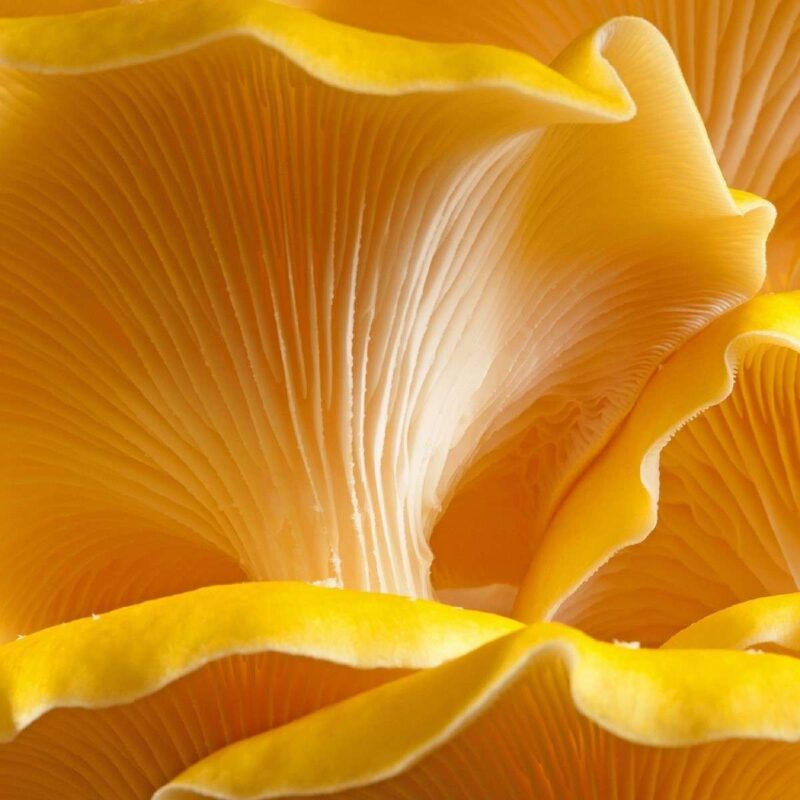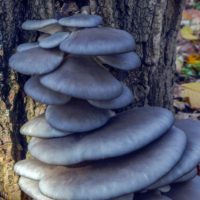Description
Properties
The common boletus (Boletus edulis), also known as spruce boletus, gentlemen’s mushroom or noble mushroom, is a species of mushroom from the family of the large boletus relatives and type species of the genus large boletus. The fruiting bodies usually have a brownish cap, white to olive-yellowish pores, a pale reticulation on the stalk and white flesh that only very rarely turns blue when pressed or injured. The fungus forms a mycorrhiza with numerous deciduous and coniferous trees, often living in symbiosis with spruce. It is widespread in large parts of the northern hemisphere and has also been introduced by man to some countries in the southern hemisphere. The common boletus is of great importance as an edible mushroom and is commercially traded.
The mycorrhiza between Boletus edulis and the host plant is variable during the life of the plant. The fungus prefers older forests with an age between 20 and 40 years. More rarely, it occurs in stands over 60 years old. Observations of forests of this age showed that the occurrence of the spruce boletus may also decrease in the same forest over a longer period of time. In such, the chestnut boletus is more common instead. However, a connection with the change in mycorrhiza has not yet been proven. One explanation can be seen in the increase in the litter and humus layer that occurs in a closed canopy; this causes a reduction in fruiting body production (see the section on soil structure). Consequently, open, sunny places are suitable for the spruce boletus. The chestnut boletus, on the other hand, is a fungus that likes to be found in nutrient-rich, mineral-rich soils with a thick litter and humus layer.
Studies have shown that the amount of mineral nutrients in the soils in which the spruce boletus grows can vary greatly. The only recurring characteristics are a medium to very high amount of iron and a usually high amount of carbon and a high C/N ratio. Laboratory studies have shown that carbon is absolutely necessary for mycelial growth.
Some significant differences were found between the soils of the different mycorrhizal partners: The extractable amount of iron, the available amounts of calcium and sulfur, and the ratio between carbon and nitrogen in the soil of copper beech are higher than in soils without this tree species. In the soil of sessile oaks the total amount of nitrogen is higher and at the same time the C/N ratio is lower than in other soils. Slope birches in symbiosis with the spruce stonecrop are located in soils with higher available amount of calcium, sulfur and organic carbon, and high total amount of nitrogen. The comparison with the conditions of the soil of the pine boletus (Boletus pinophilus) did not reveal significant differences.
The spruce boletus was already appreciated by the Romans. However, they often used it to assassinate politicians or other public figures by hidden poison. In ancient times, the spruce cep was believed to possess healing properties such as removing freckles or other blemishes; an ointment made from the mushroom was used to better cure dog bites. The spruce boletus is also used in traditional Chinese medicine. There, for example, it is the main ingredient of a pill for stimulating blood circulation and relaxing muscles and joints; the mushroom has also been used to treat various gastrointestinal disorders. In Italy, porcini risotto is a traditional autumn dish.
The mushroom is avoided in Zimbabwe, among other places, where it is often found under pine trees. This type of tree is considered with great caution, as it is also home to poisonous mushrooms such as the fly agaric (Amanita muscaria) and the panther mushroom (Amanita pantherina).
A comparative study of the amino acid composition of eleven Portuguese wild mushroom species showed that Boletus edulis has the highest total amino acid content.
-Rich in dietary minerals, sodium, iron, calcium, and magnesium.
-High content of B vitamins and tocopherols
-Appreciable amounts of selenium, a trace mineral
-Carbohydrate component contains monosaccharides glucose mannitol, α-trehalose and polysaccharide glycogen
The exposure to heavy metals is a health risk, as porcini mushrooms belong to the species that can accumulate heavy metals. 100 grams of the spruce boletus can contain between 0.1 and 0.2 milligrams of cadmium and 0.08 to 0.5 milligrams of lead. It can tolerate the pollutants because it forms phytochelatins that bind them and thus detoxify them.
In rare cases, the spruce boletus can cause allergic reactions by inhalation, ingestion, or contact, which are caused by the antibody immunoglobulin, this is triggered by a protein that is stable in digestion. In extremely rare extreme cases, consumption of the porcini may cause life-threatening reactions.
Water-insoluble structural polysaccharide chitin (up to 80-90% of dry matter in mushroom cell walls). Chitin, hemicellulose, and pectin-like carbohydrates-all indigestible by humans-contribute to high proportion of insoluble fiber in B. edulis.
In animal studies, the porcini mushroom was shown to induce the life-threatening poisoning syndrome of rhabdomyolysis when consumed in large quantities over several consecutive days. The study also showed this for other edible mushrooms such as birch red cap (Leccinum versipelle). An occurrence of rhabdomyolysis in one individual due to multiple consumption of a mixed mushroom dish of red caps and porcini has been reported from Poland. Repeated consumption of larger quantities of porcini mushrooms in quick succession should therefore be avoided.
Boletus edulis s is a very good carrier of protein; it is very similar to the best animal proteins and is particularly easy to digest. In addition, it is rich in free amino acids[.
The fatty acids it contains are largely (84.5%) unsaturated, of which about half are polyunsaturated. These include linoleic acid (42.2 percent of all fatty acids) and linolenic acid (0.2 percent), which are the most abundant. Among the monounsaturated fatty acids contained is oleic acid (36.1 percent of all fatty acids); saturated fatty acids include palmitic (9.8 percent) and stearic (2.7 percent) acids.
100 grams of the meat contain an average of almost 500 milligrams of ergosterol, mainly in cap and hymenophore, and almost 30 milligrams of ergosterol peroxide. The latter has anti-inflammatory and antiviral effects, among others.
Boletus edulis also accumulates heavy metals. In addition to toxic substances such as cadmium and lead (see the Health Aspects section), silver (0.02-0.3%, based on dry weight and sites uncontaminated by heavy metals) and gold (<0.002%), among others, were detected in the flesh of the fruit bodies
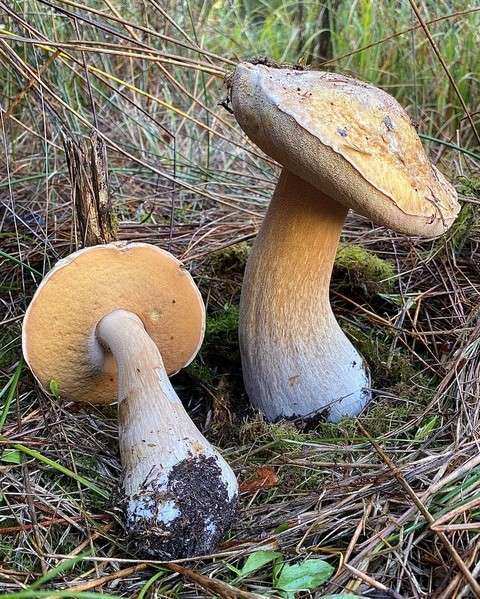
© Drew Henderson (Hendre17)
1. Growing
Affiliate Partner
Growing Procedure
At least about ten million spores are needed for the establishment of the symbiosis of Boletus edulis with a host. On a laboratory scale, it has already been possible to infect plants with the spruce boletus, but afterwards the fungus is unable to continue to associate with the plant. In another method, seedlings are infected with the fungus and then grown.
The process can be improved with abietic acid or with dried hats of spruce boletus buried near the roots of the tree. Further research has shown that other ectomycorrhizal fungi and other soil organisms in the soil provide stable infections.
Growing
Agar Culture Media: MEA
Cropping Cycle: –
Containers for fruiting: Outdoor Bed
Biological efficiencies: –
Substrates: Straw, hey and substate mixes
This is a mycorrhizal fungi, grow it on an outdoor bed, prefered on a forest edge
Growing Characteristics
difficult to cultivate indoors
S
|
P
|
F
|
|
|---|---|---|---|
Temp °C |
16-22 | 16-28 | 22-25 |
Relative Humidity % |
90-100 | 95 | 95 |
Duration d |
7-14 | 28-42 | |
CO2 ppm |
>10000 | ||
FAE per h |
0-1 | ||
Light lux |
– | ambient light | ambient light |
Natural Habitat
Boletus edulis is found mainly in forests with acidic to neutral soil. It only occurs on alkaline substrates if these are acidified on the surface. The pH of the substrate averages about 4.2 for the uppermost 20 centimeters; extreme values are about 3.5.:48 Investigations with pure cultures showed that the optimal pH for mycelial growth is somewhat higher than for fructification (fruit formation). Sandy and loamy soils are also accepted and the rootability of the substrate also plays a rather subordinate role. Thus, the spruce stone fungus is found with brown soils, parabrown soils, rendzines and rankers, among others. On the other hand, too dry and too humid conditions are avoided.
Boletus edulis is naturally distributed in the northern hemisphere in large parts of Europe up to Morocco, in Asia as well as in North America and Mexico.
In the southern hemisphere the mushroom does not occur naturally, but it has been introduced in New Zealand, South Africa, Kenya and Zimbabwe.
mixed forest, preferably fir, spruce, pine, also oak, hornbeam, beech, chestnut, linden and other deciduous trees, symbiotic mushroom, early summer to late autumn
2. Identification
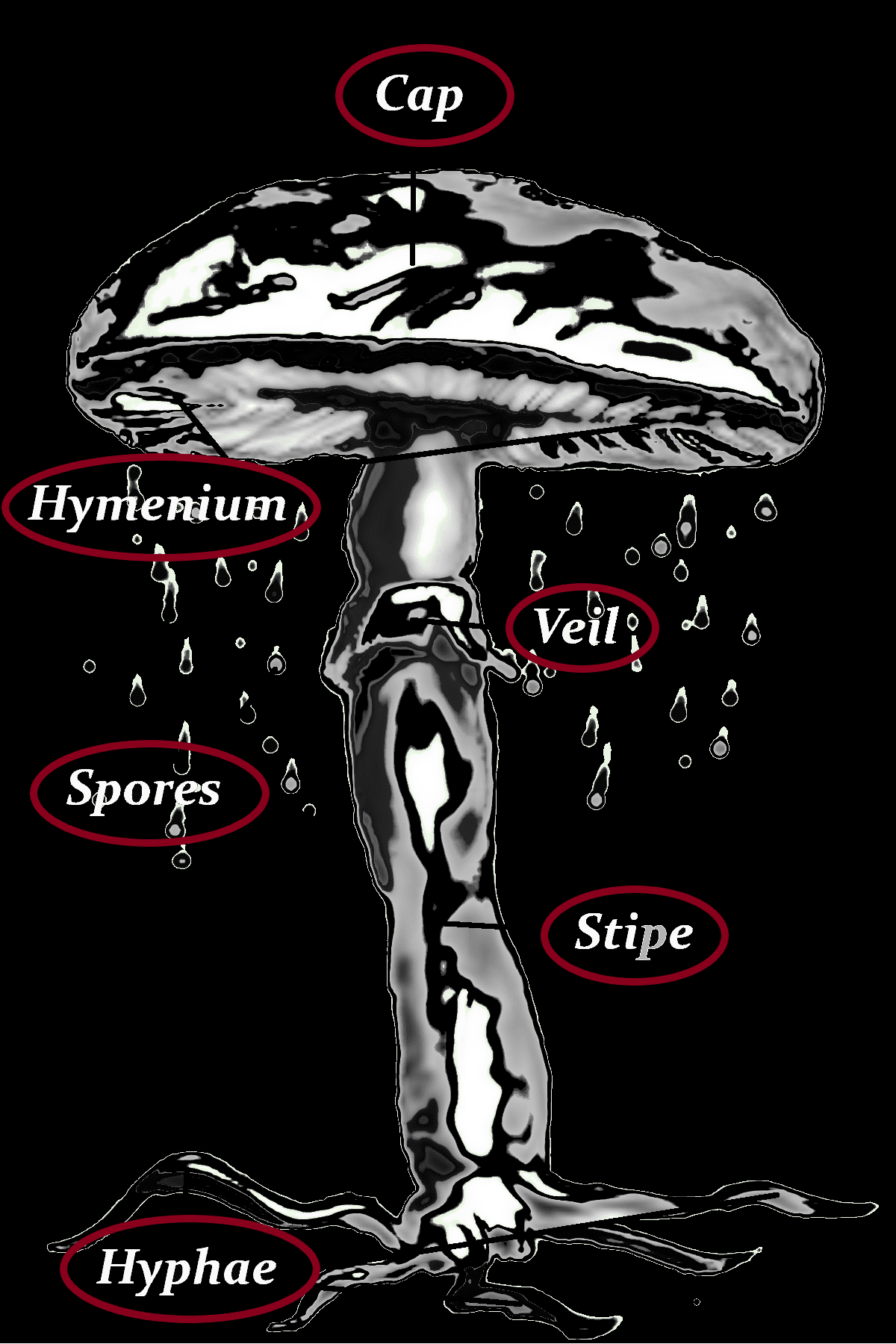
Cap
-4-20cm Ø
-convex
-suede brown, hazelnut brown
-rolled on mostly white edge
Danger of confusion
Tylopilus felleus, Imleria badia, Boletus reticulatus, Boletus pinophilus, Boletus fulvomaculatus, Boletus edulis forma betulicola, Boletus citrinus, Hemileccinum depilatum
Hyphae
-clamps lacking
-wavy to slightly tortuous
-colorless
-adjacent to septum, one side-branch at septum
-cells slightly constricted, smooth
-ramification Y-shaped
Hymenium
-adnate
-pores
-whitish, yellowish, yellow-green, later olive-green, occasionally turning bluish to greenish on pressure
Stipe
-bare
-whitish, brownish overfibering
-has a white, brownish network with age
Spores
-olive brown
-12,4-19,2 x 4,5-5,5 pleurozystiden, cheilozystiden 35-70 x 5,5-10 µm
-spindle-shaped, slender to bottle-shaped
Veil
–
3. Consuming
Gourmet
Boletus edulis is one of the most sought-after and collected edible mushrooms, with all similar species having comparable edible value. The mushroom has gained its popularity mainly due to its intense mushroom flavor, which does not diminish significantly even when dried and cooked. It has a firm flesh that does not significantly lose its consistency even after prolonged cooking. The mushroom can be prepared in almost all ways; it is suitable for frying, stewing and braising, but can also be dried or frozen. However, there are different opinions about eating it raw. Sometimes the literature states that the spruce boletus can be eaten raw. However, it is reported that it causes very severe stomach pain if taken untreated.
Smell
tasty, mushroom like
Taste
mild, tasty mushroom like, also raw eddible
Flesh
whitish, short red-brownish zone under the cap skin, not discolouring
Nutritional content of 100g
| carbohydrates | 9% |
| fat | 3% |
| protein | 7% |
| moisture | 80% |
|
The proportion of fatty acids (expressed as a % of total fatty acids):
|
|
| palmitic acid | 10% |
| stearic acid | 3% |
| oleic acid | 36% |
| linoleic acid | 9% |
| Thiamine (B1) | 0.105mg |
| Quantity %DV* + value | |
| Riboflavin (B2) | 8%, 0.092 mg |
| Niacin (B3) | 40%, 6.07 mg |
| Pantothenic acid (B5) | 53%, 2.64 mg |
| Vitamin B6 | 4%, 0.051 mg |
| Folate (B9) | 73%, 290 μg |
| Vitamin C | 5%, 4.21 mg |
| Calcium | 0%, 1.195 mg |
| Copper | 39%, 0.786 mg |
| Iron | 6%, 0.739 mg |
| Phosphorus | 3%, 22.26 mg |
| Potassium | 4%, 203.3 mg |
| Zinc | 44%, 4.172 mg |
4. Data
other names
| Afrikaans | Eetbare Boleet |
| Afrikaans | Sep |
| Chinesisch (traditionell) | 美味牛肝菌 |
| Chinesisch (vereinfacht) | 美味牛肝菌 |
| Deutsch | Fichten-Steinpilz |
| Deutsch | Gemeiner Steinpilz |
| Deutsch | Herrenpilz |
| Dänisch | Karl Johan |
| Dänisch | Spiselig rørhat |
| Englisch | Cep |
| Englisch | King Bolete |
| Englisch | Penny Bun |
| Englisch | Porcini |
| Estnisch | Harilik kivipuravik |
| Finnisch | herkkutatti |
| Französisch | Cèpe de Bordeaux |
| Galizisch | Boleto bo |
| Galizisch | Madeirudo |
| Griechisch | Βασιλομανίταρο |
| Griechisch | Βωλίτης ο εδώδιμος |
| Griechisch | Βωλίτης ο φαγώσιμος |
| Griechisch | Πορτσίνι |
| Italienisch | Porcino |
| Japanisch | ヤマドリタケ |
| Katalanisch | Cep |
| Litauisch | Tikrinis baravykas |
| Magyar | Ízletes vargánya |
| Niederländisch | Gewoon eekhoorntjesbrood |
| Norwegisch | Steinsopp |
| Ojibwe | Ogimaawikwaan wazaashkwedoowin |
| Polnisch | Borowik |
| Polnisch | Borowik szlachetny |
| Polnisch | Prawdziwek |
| Portugiesisch | Madeirudo |
| Russisch | Белый гриб |
| Russisch | Боровик |
| Schwedisch | Karljohansvamp |
| Schwedisch | Stensopp |
| Slovene | Jesenski goban |
| Slowakisch | hríb smrekový |
| Slowenisch | Jesenski goban |
| Spanisch | Hongo calabaza |
| Spanisch | Hongo cemita rey |
| Tschechisch | hřib smrkový |
| Türkisch | ayı mantarı |
| Türkisch | çörek mantarı |
| Ukrainisch | Білий гриб (Боровик) |
| Weißrussisch | Баравік |
| Weißrussisch | Белы грыб |
| Weißrussisch | Праўдзівы грыб |
| Wissenschaftl. Name | Boletus edulis |
| Wissenschaftl. Name | Tylopilus porphyrosporus olivaceobrunneus |
other names
Ceriomyces crassus, Boletus solidus, Leccinum edule, Dictyopus edulis, Boletus edulis var. Arenarius, Boletus edulis var. Arcticus, Boletus edulis var. Grandedulis, Boletus reticulatus var. citrinus, Boletus edulis betulicola, Boletus edulis f. quercicola, Steinpilz, Gemeiner Steinpilz, Fichtensteinpilz, Pilftling, Herrenpilz, Steini, Beisserl, Steinbott, Dobberniggl, Weizerl, Dobernikel, Dobanickl, Pfunscha, Fichtl, Braunwoidzerl, Braunkopf, Doberling, Bols, Edelpilz, Herrenschwamm, Küefotzn, Pilster, Pilzl, Pülstling, Pülzl, Saupilz, Pülzling, Stein-Röhrling, Worzel, Steinkopf, Steinbürstling, Woazerl, Woidzerl, Woizerl, Püz, porcino, porcini
| Kingdom | Fungi |
|---|
| Division Basidiomycota Class Agaricomycetes Order Boletales Family Boletaceae Genus Boletus Species B. edulis Ecology Mycorrhizal |



